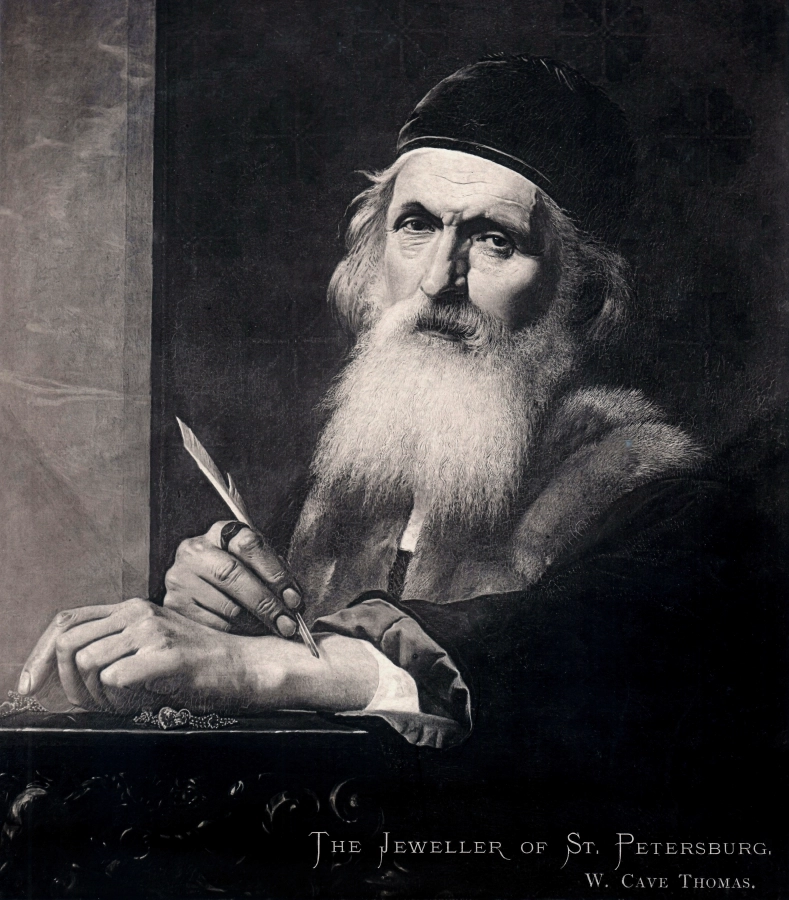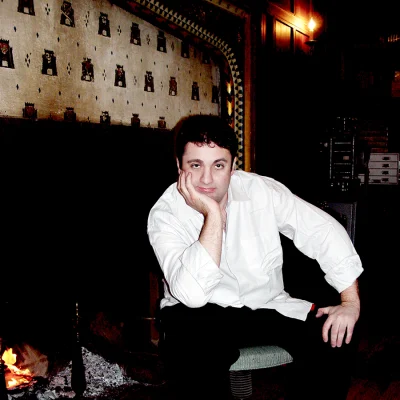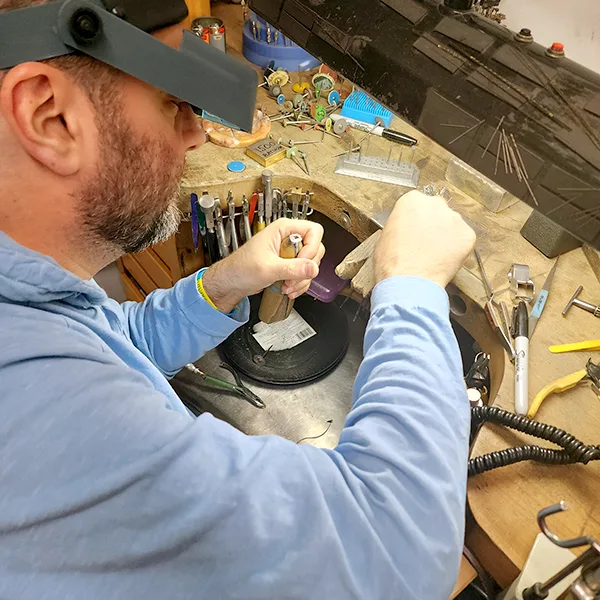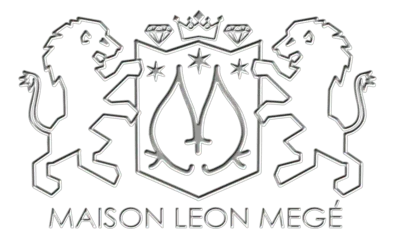About
Leon Mege is the award-winning, world-renowned jeweler best known for his outstanding craftsmanship, deeply steeped in the European tradition and pioneering work with micro pave. He holds several design patents in the jewelry and diamond cutting field from decades of work at the bench. Megé has produced important pieces for some of the most renowned Madison Avenue and Hatton Garden houses throughout his lifetime.
Coming from a long line of scientists and engineers – Leon Mege has honed his ancestral expertise into a frivolous field of useless adornments and shiny pebbles instead. Leon was born into a poor Jewish family in Saint-Petersburg, Russia, on July 4th, 1963. His father was an engineer-turned-dissident who used political jokes to undermine the communist regime. Leon’s mother was a scientist working at a nuclear weapons lab.

Early years
Leon’s parents hid their Jewish ancestry to protect him from the wrath of anti-semitism, so he grew up hating Jews just like the rest of his schoolmates. So, it came as a shock when at the tender age of 10, he found out that he was Jewish. The stunning discovery changed him forever; from then on, his childhood changed from that of most children his age. When his playmates would scamper off to beat up the Jews and nerds, Leon would happily set off with his mother to explore museums and art galleries.
His mother was an enlightened guide into the exciting and dazzling world of art, and she explained to Leon the meaning of jewelry – a form of expression as profound and powerful as music or painting. Leon was taken by the perfection of simplicity, of unassumed minimalism that brings out the true beauty.

The Beginning
Young Leon was not interested in becoming a jeweler. It was awful to think of a career of making shiny trinkets while so much suffering existed in the world. Leon was eager to become a productive member of society by becoming an architect or, even better, a city planner. Unfortunately, his dream of a college education was shattered once his family became a target of political repression, and his parents were forced out of their jobs. The authorities refused to issue an exit visa and halted their attempt to escape Russia. The 1980 Russian invasion of Afghanistan worsened the political climate, so emigration was no longer possible. Learning jewelry making was the only option fitting Leon’s artistic skills and postponing the military draft. In 1981 Leon graduated from State Art College #11 (Художественно-профессиональный лицей Санкт-Петербурга имени Карла Фаберже).
While serving in the military, where Leon was drafted in 1982, he developed an avid interest in fine arts and design, a passion he still carries today. Upon discharge, Leon continued his career as a bench jeweler and, while repairing an umbrella one day, discovered the uncanny ability to design jewelry. Being an outspoken activist and defender of worker’s rights, Leon was always on the management and the KGB radar. Taking the top prize in a jewelry competition held at the factory in 1987 infuriated the administration so much that Leon was immediately fired. Luckily, soon after, he and his family were allowed to emigrate. In December of 1987, he finally left Russia for good.
The American Dream
Upon his arrival in New York, Leon secured a job with a prominent jewelry designer, Henry Dunay. By day he earned a meager salary working as a bench jeweler and attending diamond grading classes at the Gemological Institute of America by night. After earning a Graduate Gemologist Diploma at the GIA, Leon worked as a master jeweler for Werner Lippe, a notorious Austrian jeweler famous for his colorful and volatile personality. Twenty years later, Lippe was sentenced to life in prison for knocking his wife unconscious, stuffing her into a burn barrel, setting it on fire, and later dissolving her remains in acid.

Despite Leon’s young age, he quickly became respected in the trade as one of the best in the shop. Clients began requesting more important pieces to be made by him rather than others. Working on museum-grade jewelry is when Leon developed a knack for the precise craftsmanship required in making high jewelry.
Leon began to design one-off pieces and show them in his Queens apartment, quickly known as “Le Brillianteria” among his friends. His work piqued the interest of a few potential customers, and soon the commissions began rolling in. The company was founded in 1996 after Leon was forced to quit his job after narrowly escaping death, defending a gay co-worker.

The Path to Success
Mege opened his Madison Avenue workshop to the public. Shortly after, he moved into a spacious penthouse workshop with a private showroom on the corner of Fifth Avenue and 47th Street in Manhattan. Leon Mege’s team of bright and passionate professionals consists of European-trained platinumsmiths and setters. Jewelers are excited to work with a designer who strives to create nothing short of a masterpiece.
Leon Mege’s relentless pursuit of excellence and desire to welcome private clientele led him to a successful retail business, where he can work with customers directly, providing them with much-deserved quality and value.
Jeweler to the Stars
Leon Mege’s work has become renowned for its elegance, quality, craftsmanship, and reputation for excellence. His work style is best described as a contemporary classic with a touch of surprises – intricate ajours, secret stones, and hidden filigree. The signature of a Leon Mege ring is in its simplicity – “Spotlight the gem, hide the metal” is his mantra. A piece will not leave the shop unless it meets the designer’s aesthetic and quality standards.
In 2014 the company moved to a new location in the heart of New York’s Diamond District. The shop is situated in the footsteps of the illustrious Times Square, close to the International Gem Tower, housing GIA. His eye-catching creations are crisp and beautiful. They break jewelry conventions while being unapologetically classic at the same time. They bring a special flair to what is certain to be future heirlooms.


